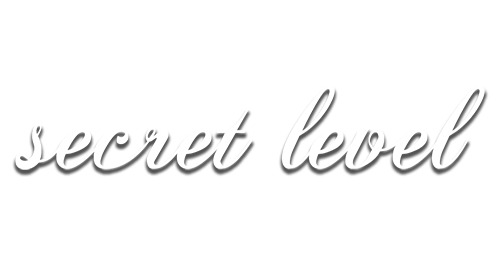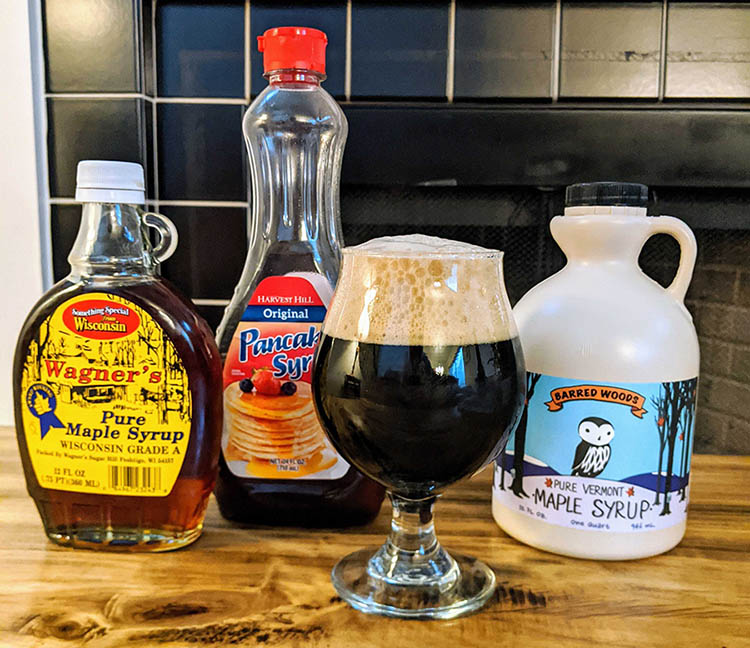

We've all heard it , maple syrup ferments out so you won't get much flavor from adding it. I have actually tried pretty much all of the methods to try to get some maple flavor in my beers. I've done a maple as priming sugar, fenugreek seed beer, maple extract beer, maple in primary, maple in secondary, maple soup, maple gumbo... just kidding about the last two. You get the point, I'm the Bubba of the maple syrup beers.
Solution? There is a technique that is often used for fruit additions by several breweries. It's a technique that's briefly mentioned by the head brewer of Great Notion - Andy Miller in a Craft Beer & Brewing podcast. They arguably make one of the best maple-flavored beers, Double Stack. When I first heard this podcast, some sort of light must have lit up above my head, I was beyond excited.
To successfully brew a beer with maple syrup, you'll need to make sure that the yeast aren't going to be able to ferment it. To do this, you'll need to use common brewing ingredients - potassium metabisulfite (Campden tablet) and potassium sorbate (winemaking aid).
Allow fermenter to sit at room temperature for 1-2 weeks just in case there's some slight fermentation still taking place. Campden and Sorbate do not actually kill the yeast, but rather prevent it from multiplying. This is why you may still get a little refermentation, but the yeast won't be able to ferment the majority of the syrup.
#1. This process works well if you keg, or keg and then bottle. If you don't have kegging setup, the process is little different, jump to the bottling procedure.
#2: Taste the syrup in beer before you add. Get some bottles of Guinness (or similar base stout), then test adding small amounts of maple to each to make sure that your syrup adds ample maple flavor. I've made beers with maple that just tasted like plain sugar due to poor quality syrup. I personally like this syrup. Darker is better.
Here are some recipe building tips and my go-to recipe for brewing a breakfast stout. This recipe creates a slightly roasty, but balanced stout that lets maple take the center stage. Not too sweet or dry, the maple flavors intermingle with coffee to create something truly decadent. This is a beer you can easily drink a full glass of and still want more. My guests always ask for this beer.
 Use your favorite maple syrup, the fresher and darker, the better.
Use your favorite maple syrup, the fresher and darker, the better.Brew a beer a little drier then usual. My 10% adjunct stouts usually finish around 1.035 - 1.045, but in this case, I would allow them to ferment down to 1.015 or 1.020 by using US-05 as opposed to an English Ale yeast and mashing lower than usual.
A good trick is to also use some maple syrup during primary fermentation. Add 8oz (for 5 gallons) during primary fermentation to impart slight maple flavor and help dry the beer out and finish lower.
Thick and chocolatey, this is the base stout that I love using for adjunct stout recipes, usually ones containing coffee and other goodies.
5 Gal Batch with 68% efficiency
Base stout:
OG: 1.098, FG: 1.020
With Maple added (in primary and secondary):
OG: 1.107, FG: 1.025
Grist
46% 2-row
20% Flaked Oats
9.5% Briess Carapils
9.5% Carafa Special II
7.0% Simpsons Crystal Dark
3.0% Simpsons Crystal Light
2.5% Black Malt
2.5% Roasted Barley
Mash at 153F (Optional - add more roasted malts for a more roasty profile)
Other
Hops - 30 IBU @ 60 min
Yeast - US-05, 1L starter
Maple - 8oz in primary (fermentable)
Maple - 16oz in secondary, 1 day after Campden and Sorbate additions in secondary
Coffee - 5oz freshly roasted and ground beans steeped in 10oz water in a french press
Notes
Ferment for 1 week at 68F to avoid significant ester production. Add the first maple syrup addition on day 1 or 2. Raise to 70-72F for another week and ensure completion. Transfer to secondary and add 1 crushed tablet Potassium Metabisulfite (Campen) and 21g Potassium Sorbate.
Wait 1 day before your second maple addition. At this point, I would add 10-12 oz of syrup and see how sweet the beer is after a week. If you're happy with the results, then keg/bottle. If not, add more maple syrup to taste.
I'm changing the recipe grist to increase the total roasted malts. Higher roasted malts will help offset the sweetness that maple syrup adds and help balance the beer. You can decrease these if you like sweeter, Angry Chair-style beers, but I warn you that it may be hard to drink a pint of this beer.
Many folks add coffee at this point if doing a breakfast stout. Cold brew has given me decent results, but steeping whole beans at colder temps has given me fantastic results.
Coffee does a great job at balancing the maple syrup if the beer ends up too sweet. Coffee adds a roastiness and allows further depth of flavor.
I like to steep 2oz of fresh whole beans for 48 hours in a cold fermenter, and also add cold brew at the same time. French press adds more flavor and steeping beans gives more coffee aroma. You can make cold brew by grinding up the beans and adding them to cold water in a french press. Those can be purchased at Ikea for ~$10.
Because you need live yeast to carbonate your bottles, you cannot treat your beer with Campden or Sorbate. I would recommend looking into back sweetening methods that meadmakers use. Research will be critical to your process here. This article is a great place to start, but to sum it up, the methodology includes adding your sugar (maple syrup) to bottles in higher amounts than necessary to carbonate, then neutralizing the yeast once your beer has reached desired carbonation. The process involves testing your bottles frequently and then heating them up to 180F in water to neutralize once carbonated.
If you brew any of these recipes or otherwise try this method, let me know how it goes! Feel free to shoot a note or reach me on Instagram.
Happy brewing!